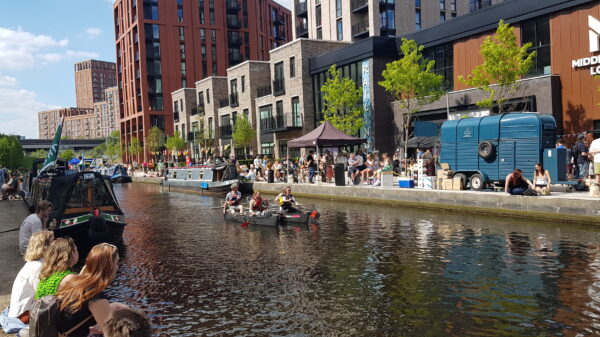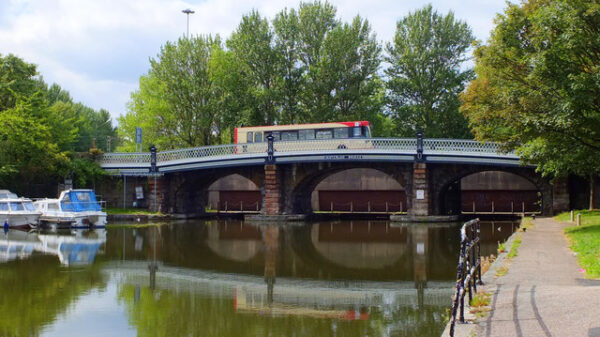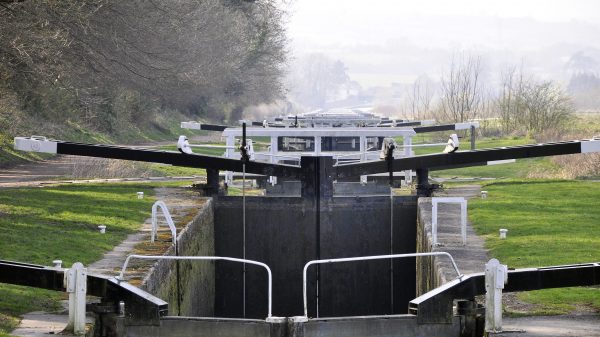From Manchester to the Coast
The Manchester Ship Canal is not considered a leisure waterway and the incompatibility of large ships and small boats means that hired vessels are not usually permitted. Boat owners must seek permission to use the Canal from the Manchester Ship Canal Company (the navigation authority – part of Peel Port), proving that their boat is seaworthy, insured and has the required safety equipment on board. Information about the requirements is on the Peel Ports Group website. As commercial traffic has decreased, the regulations have become less onerous.
There are links to the River Mersey at Eastham, the Shropshire Union Canal at Ellesmere Port, the River Weaver and Weaver Navigation at Western Point and the Bridgewater Canal via the lock in Pomona No 3 Dock.
[The photo shows Salford Docks – by Harry Arnold (c) Waterway Images]




